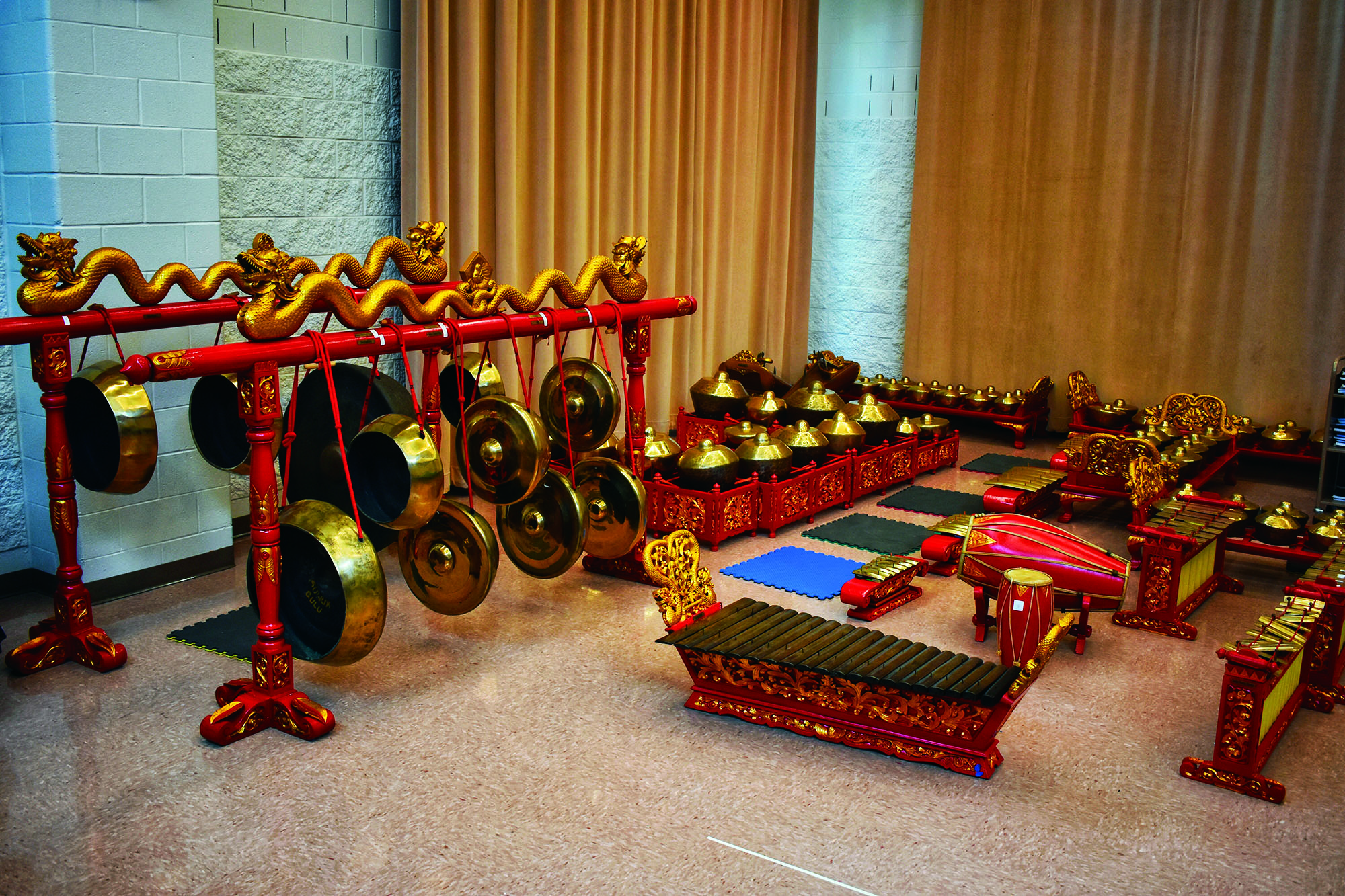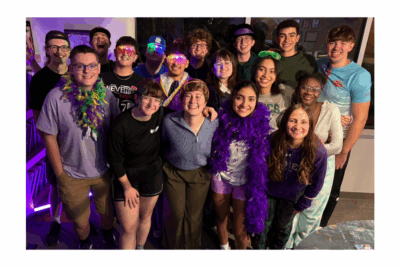It started in 2011.
That year, Debra Detwiler, professor of music, was ecstatic when she was approached with the information that an alumnus wanted to donate a series of traditional Indonesian instruments to Goshen College.“I thought, ‘Gamelan for free? This has to happen.’”
The word “gamelan” comes from the Javanese word “gamel,” which means “to strike or hammer.” Gamelans typically feature a variety of instruments similar to xylophones, drums and gongs. The rhythmic music created by gamelans is very spiritual in Indonesian culture and often includes supplementary and symbolic dancers and vocalists.
When Detwiler shared the possibility of GC getting a gamelan with her colleagues, they were more realistic; this was not going to be easy. A gamelan, being a massive multi-piece set of percussion instruments, would not be easy to move. Moreover, the Indonesian island of Java, where the gamelan was to be sent from, is located on the other side of the globe. How exactly would they get it here, and if they did, what would GC do with it?
After a lot of hard work, the gamelan finally made it to the United States during the summer of 2018. A July 1 dedication ceremony followed its arrival.
The gamelan was gifted to GC by alumnus Duane Gingerich in 2011, though various customs regulations and the instrument’s massive size hindered the transfer of the instrument from Indonesia. For those reasons, the gamelan was kept in Indonesia, where Gingerich lived, until it was ready to be shipped.
Gingerich, a 1969 GC graduate, was motivated to donate the gamelan in honor of professor emerita of music Dr. Mary Oyer, from whom he had taken the class, The Arts, during his time as a GC student. Oyer was present at the July 1 dedication and was the guest of honor. The gamelan’s official name is “Nyai Oyer Gamelan,” which translates to “Sister Oyer Gamelan.”
Gingerich’s connection to Indonesia began shortly before graduating from Goshen College. Gingerich spent from 1965 to 1968 in Indonesia as part of Mennonite Central Committee’s Pax service program. He later moved to Indonesia in 1982.
Gingerich spent the last 15 years of his 26-year legal career in Jakarta, Indonesia, as an international partner with a global law firm. Though he passed away in February 2016, his wife, Reti Gingerich, worked tirelessly with GC to see her husband’s wish of a GC gamelan come true.
The gamelan’s dedication took place in an overflowing GC choir room. The organizers had planned for an attendance of 50-75 people, but around 120 people packed into the space already half-filled with the four-ton instrument. The event consisted of special words from Reti Gingerich, President Rebecca Stoltzfus, GC organizers, Marcia Yost and Debra Detwiler and others.
The dedication also included a gamelan performance by a small group of gamelan masters. The masters had traveled from the Chicago area, New York City and Richmond, Indiana, to play at GC.
Currently, the gamelan is set up in the Music Center’s choir room. Half of the gamelan’s instruments will be moved into the Hershberger Art Gallery for a homecoming display the week of Sept. 17, and afterwards the entire ensemble will be kept in an interim home in the Union. Eventually, the college’s goal is to create a permanent home for the gamelan in a remodeled space still to be determined.
The college intends to use the instrument for two purposes. Firstly, GC students will learn to think about how they read, study and honor music in their own culture and the cultures of others. Additionally, the gamelan will be used for outreach to other colleges and universities, elementary through high school students and visiting civic and cultural groups.
“It needs to remain out and visible,” said Marica Yost, director of the arts.
It should be noted that the arrival of the gamelan coincides with GC’s return to Indonesia. The first Indonesia SST unit in nearly 20 years will be leaving for the South Pacific nation in January 2019.
The gamelan will officially be introduced to students in the Nov. 7 convocation.




